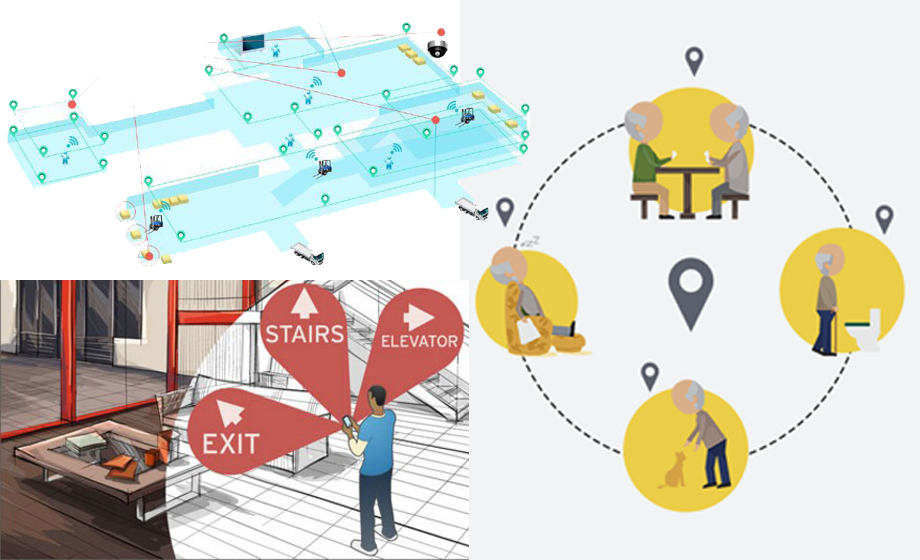Indoor positioning method based on UWB ultra-wideband positioning technology
1. Overview of UWB indoor Positioning:
UWB indoor positioning technology is very different from traditional communication technology. It does not need to use a carrier in a conventional communication system, but transmits data by sending and receiving extremely narrow pulses of nanoseconds or less, giving it a Ghz-class bandwidth. Uwb indoor positioning can be used for indoor positioning and navigation in various fields, including valuables storage, mine personnel location, robot movement tracking, car basement parking, etc.

Compared with traditional narrowband system, UWB ultra wideband positioning technology indoor positioning system has the advantages of strong penetration, low power consumption, good anti-multipath effect, high security, low system complexity, accurate positioning and so on. Therefore, UWB indoor positioning technology can be applied to indoor static or moving objects and people positioning tracking and navigation, and can provide very accurate positioning accuracy. For example, as a UWB positioning factory, the UWB indoor positioning system independently developed and produced by our company can reach a positioning accuracy of more than 10cm.
2.UWB indoor positioning principle:
Unlike Bluetooth and WIFI location methods, the location information of UWB indoor location technology is not calculated based on signal strength (RSSI), but is calculated by accurate wireless signal transmission time, reception time and algorithm. In order to achieve accurate positioning of UWB ultra-wideband positioning technology wireless positioning system, variable information related to the location is first obtained, and the corresponding mathematical model is established. Then the target coordinates are calculated according to these variables, parameters and mathematical models.
UWB indoor positioning technology has ultra-high time resolution, ensuring that UWB can accurately obtain the time and Angle information of the target to be positioned. The flight speed of the signal is the speed of light (fixed value), so as long as the flight time is known, the distance between the two devices can be calculated, and the location information of the target to be positioned can be obtained by combining Angle information with geometric positioning methods such as triangulation.
Time of flight ranging (TOF) and arrival time difference (TDOA) are widely used in indoor positioning technology of UWB ultra-wideband positioning technology. From the point of view of positioning, they all belong to multi-point positioning, that is, to determine the relative position relationship between labels and multiple known coordinate points.
3.TOFFB indoor positioning
Timeofflight (TOF) It is a two-way ranging technology, by measuring the flight time between the UWB signal and the tag to calculate the distance. According to the math, the distance from a point to a given point is constant, so this has to be at the center of the given point and the radius of the constant. There are two known points, and there are two intersection points. The three known points and distances act as three circles, which are given to the same point, the position of the label.
The mobile tag first sends a ranging request to the location base station. The base station receives the ranging request and processes it. After a period of processing, it replies to the mobile tag confirmation message, recording the time interval between the UWB signal sending and receiving. For example, we recorded the time interval between signal sending and response receiving by the sender as TTOT, and the time interval between packet receiving and response sending by the receiver of UWB ultra-wideband positioning technology as TTAT. Calculate the one-way flight time TTOF of the air signal, and then calculate the distance between the label and the base station d=c×TTOF according to the product of TTOF and the propagation speed of electromagnetic wave. According to the ranging information of each base station, draw a circle with each base station as the center to get an intersection point. The intersection point is the position of the label.
4.UWB ultra-wideband positioning technology TDOA indoor positioning
Time Difference of Arrival (TDOA) is a method of positioning by using time difference of arrival, also known as hyperbolic positioning. The tag card sends a UWB signal, and all base stations within the UWB ultra-wideband positioning technology will receive a wireless signal. If two base stations with known coordinates receive a signal, the distance between the label and the base station is different. Therefore, the time nodes of the two receiving signals are different. According to mathematical relations, a constant point with two known points must lie on a hyperbola with an emphasis on those two points. Then there are four known points (four positioning base stations), there will be four hyperbolas, the location of the four hyperbolas is the location of the label.
5. Perform TDOA technology under UWB indoor positioning
Simply put, the location base station sends the location signal, and the location tag receives the location signal. This way of working is similar to GPS, so it is also called indoor GPS. Downstream TDOA is to calculate the position coordinates on the terminal. The UWB ultra-wideband positioning technology positioning system can upload these data to the server through the label and settle the label position in real time, which benefits from the indoor positioning system's own high real-time Internet of Things transmission network.
The advantage of downlink TDOA is that the base station determines the time of signal transmission, so the power consumption of the base station is low, and it has the same advantages as GPS, that is, the system capacity is unlimited and the delay of acquiring position information is small. This mode is suitable for the independent navigation of the target.



